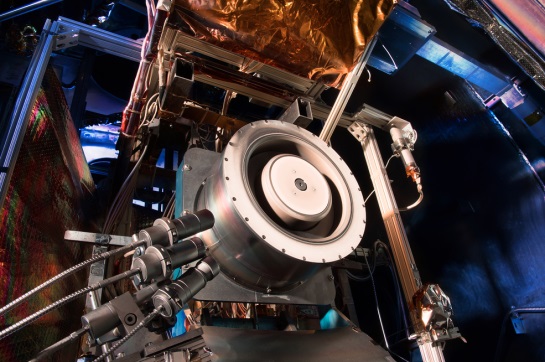
NASA has awarded a $62 million contract to Aerojet Rocketdyne of Redmond, Washington, to develop an advanced Solar Electric Propulsion (SEP) system that is capable of taking us much deeper into space.
The Advanced Electric Propulsion System (AEPS) contract will design propulsion systems for the robotic portion of NASA’s Asteroid Redirect Mission (ARM) as well as missions to Mars. The development of ion drives and Hall thrusters that can increase spaceflight transportation fuel efficiency by 10 times over current chemical propulsion technology, will also be included within the contract.
“Through this contract, NASA will be developing advanced electric propulsion elements for initial spaceflight applications, which will pave the way for an advanced solar electric propulsion demonstration mission by the end of the decade,” said Steve Jurczyk, associate administrator of NASA’s Space Technology Mission Directorate (STMD) in Washington. “Development of this technology will advance our future in-space transportation capability for a variety of NASA deep space human and robotic exploration missions, as well as private commercial space missions.”
Although Solar Electric Propulsion has a lower thrust than chemical propulsion—the type of propulsion that is used to propel rockets in to orbit—it is more fuel-efficient and can provide thrust for longer periods of time, making it ideal for long missions in the vacuum of space.
Solar Electric Propulsion engines provide thrust by converting solar energy into electricity, which is then used to ionize and accelerate propellant at extremely high speeds.
NASA, which has been working on SEP technology since the 1950s, has used SEP on past missions. The Dawn spacecraft mission, for instance, is the first spacecraft to orbit around two extraterrestrial bodies. The spacecraft, managed by JPL, surveyed the giant asteroid Vesta and the protoplanet, Ceres—both of which are located in the asteroid belt—between 2011 and 2015.
Aerojet Rocketdyne will oversee the development of an electric propulsion system consisting of a thruster, power processing unit (PPU), low-pressure xenon flow controller, and electrical harness. To help with this contract, the company will be able to reference a prototype thruster that has been developed and tested by NASA.
During the 36-month contract, Aerojet Rocketdyne will construct, test and deliver an SEP product for testing and evaluation. Eventually, Aerojet Rocketdyne will deliver four electric propulsion units that will fly in space.
In addition, the company will also be responsible for the chemical propulsion — the RS-25 engines — for NASA’s Space Launch System. The Space Launch System, which is said to be ‘the most powerful rocket NASA has ever built’, is set to be used in NASA’s Journey to Mars initiative.
You want to support Anonymous Independent & Investigative News? Please, follow us on Twitter: Follow @AnonymousNewsHQ
This Article (Deep Space Exploration On The Horizon? NASA Working On Solar Electric Propulsion) is free and open source. You have permission to republish this article under a Creative Commons license with attribution to the author and AnonHQ.com.





